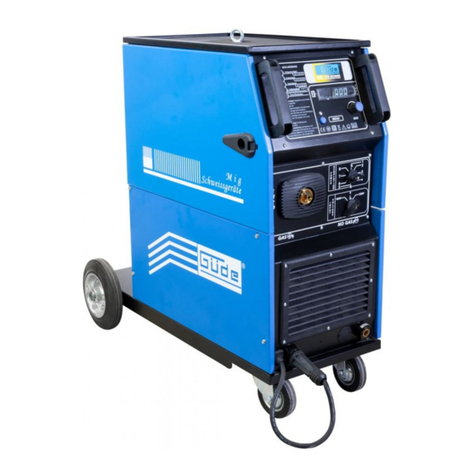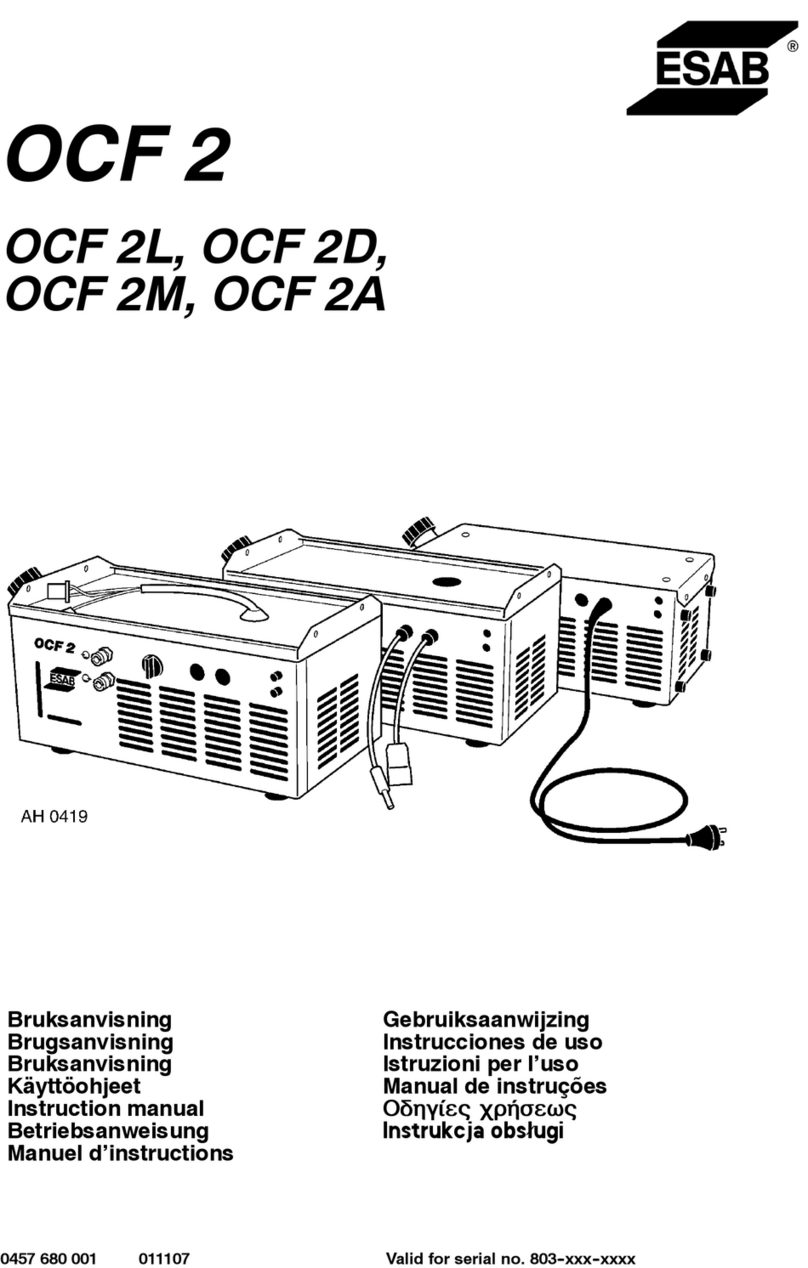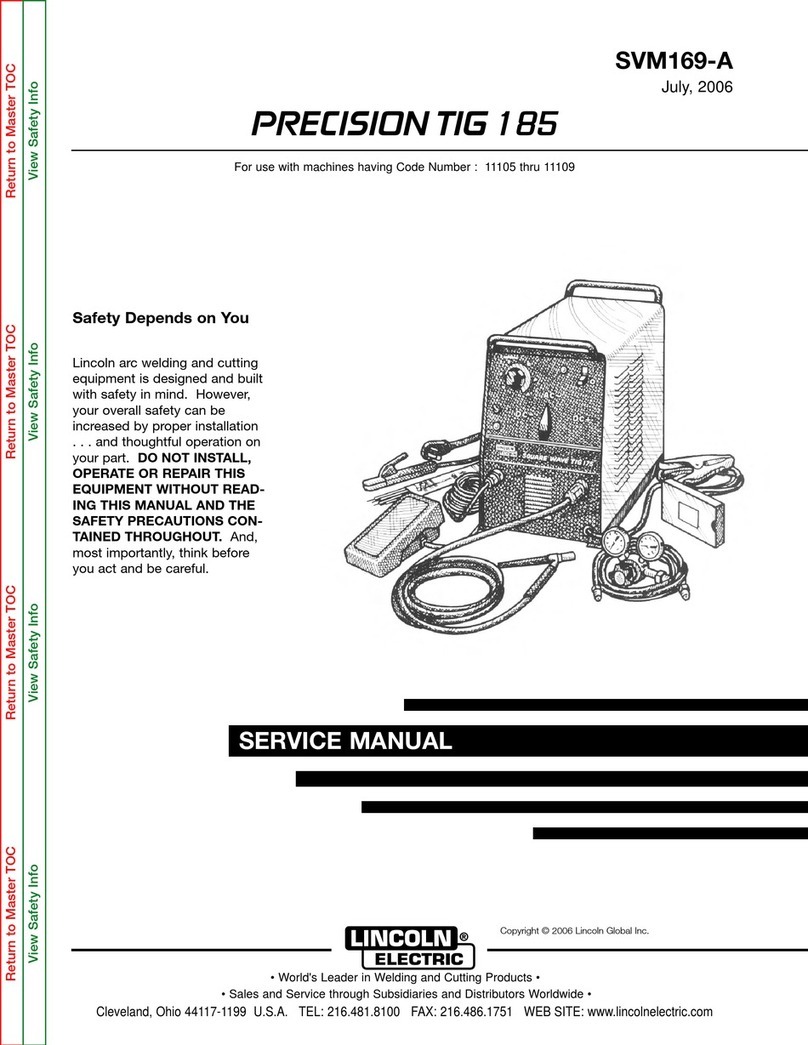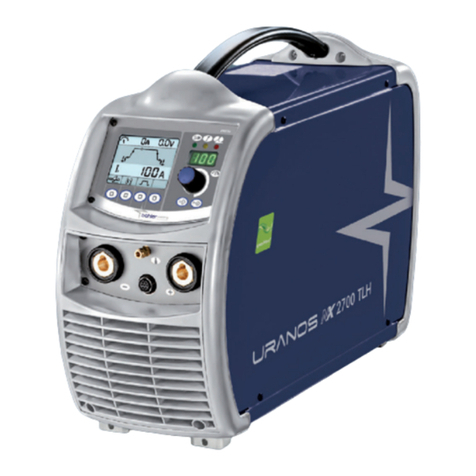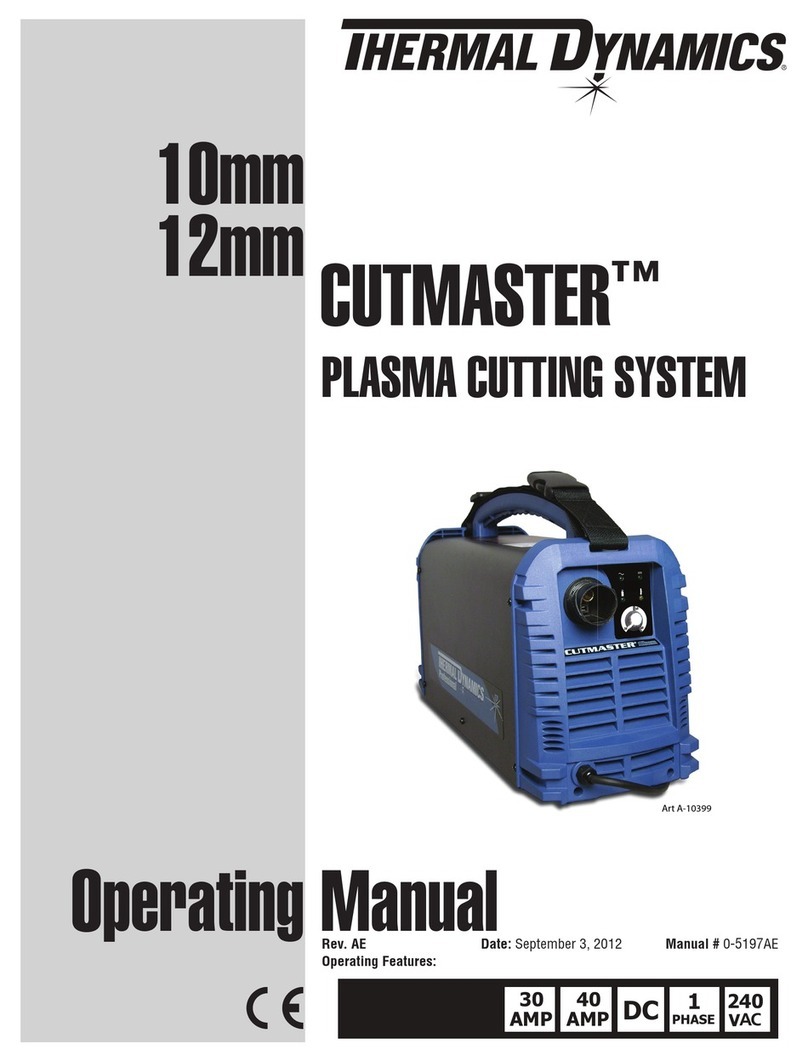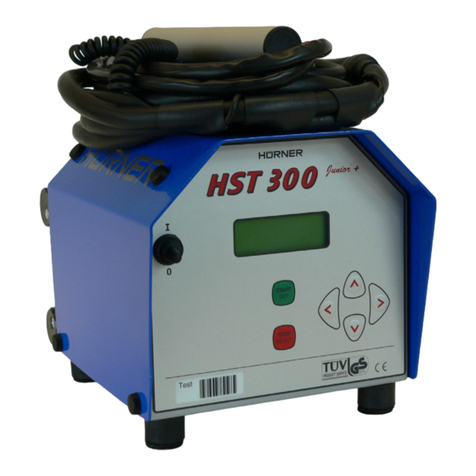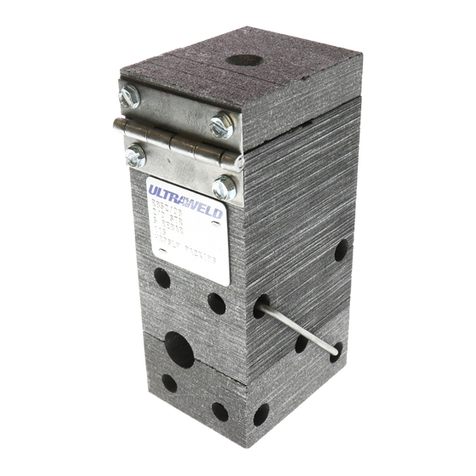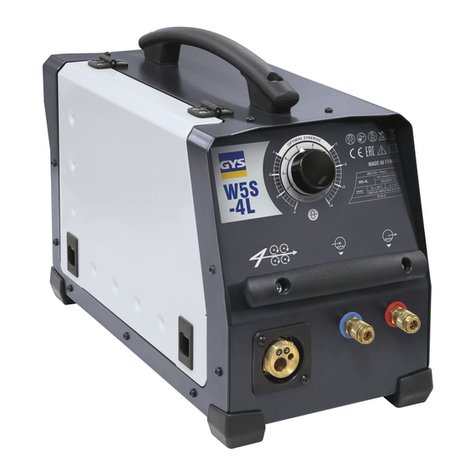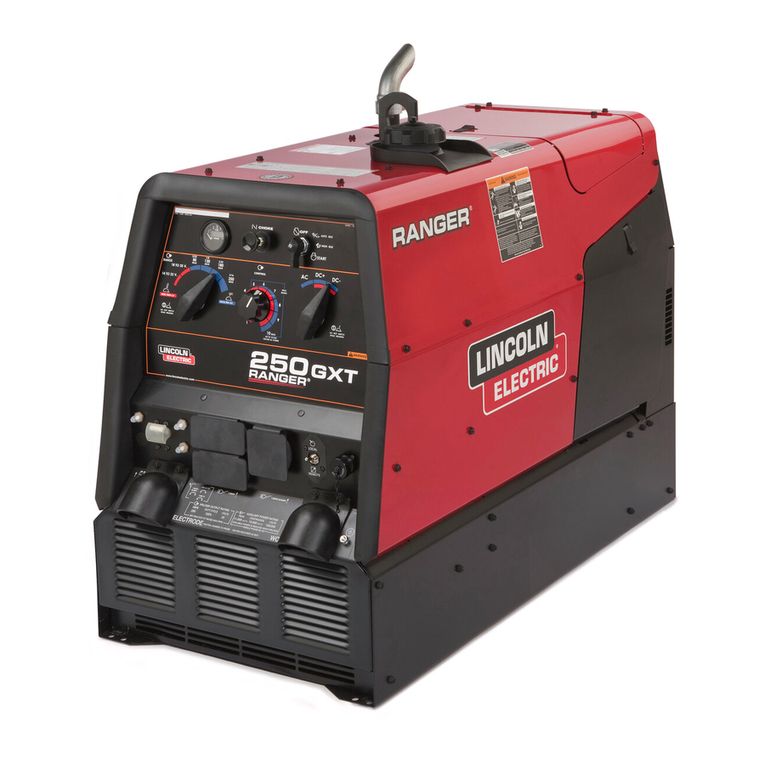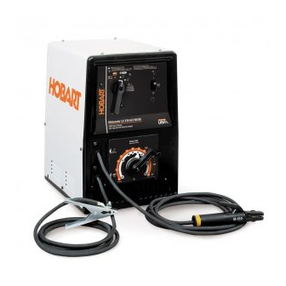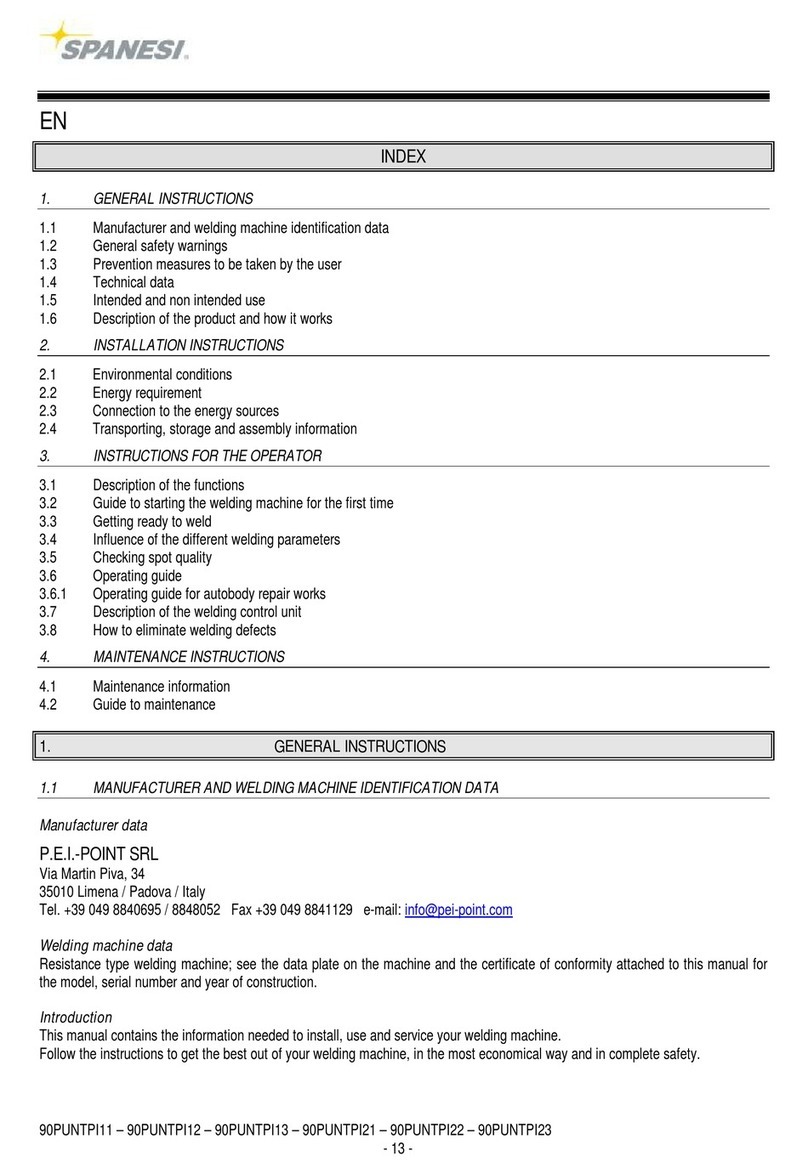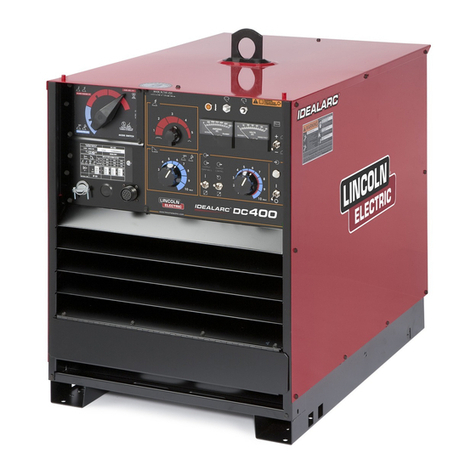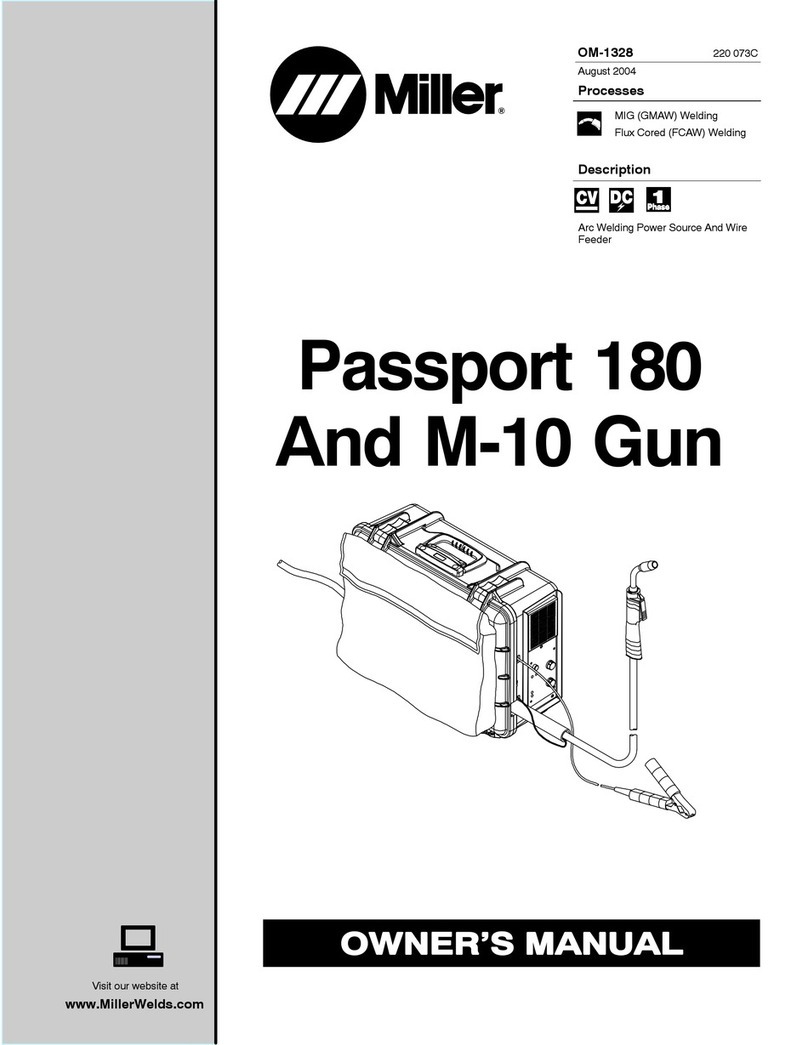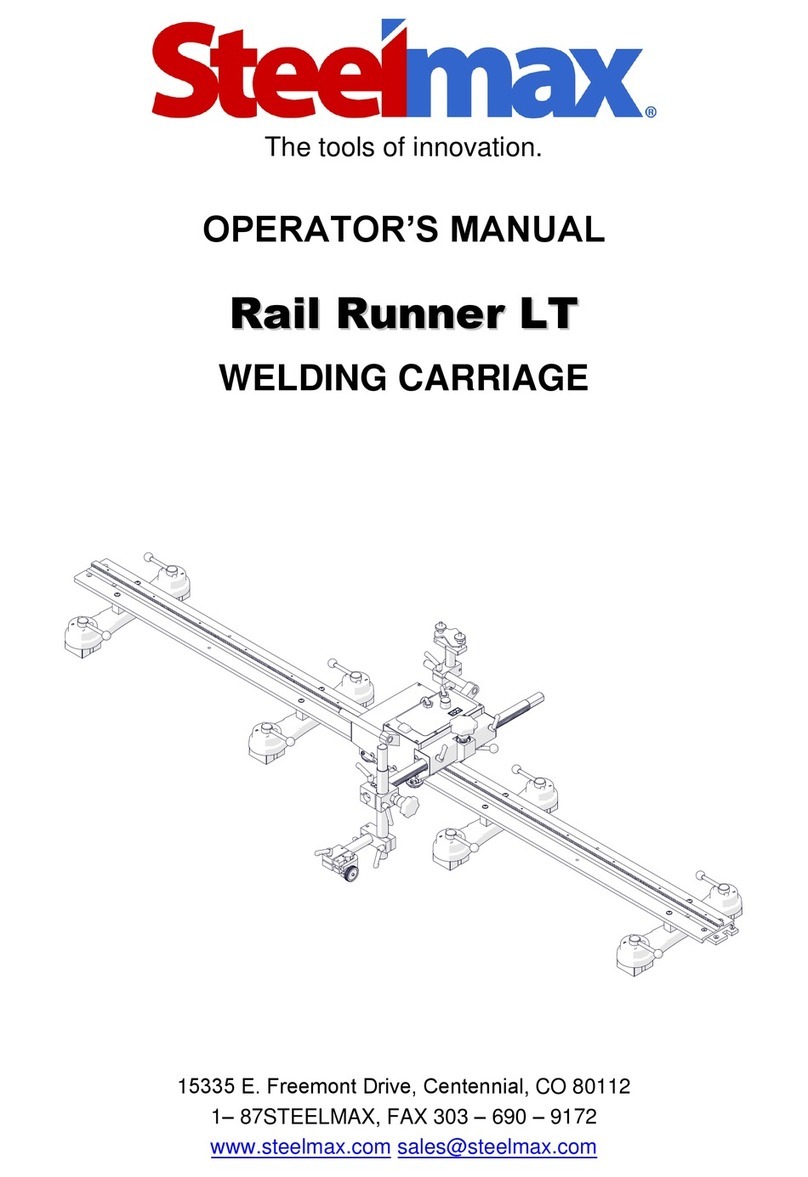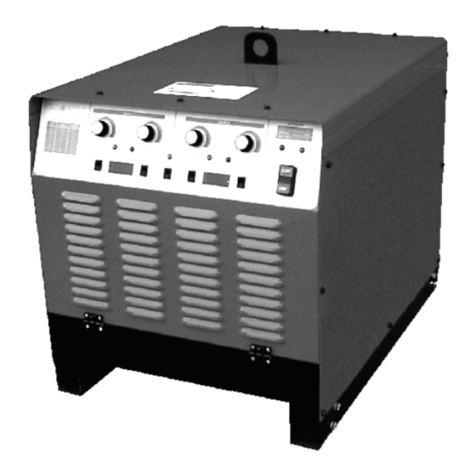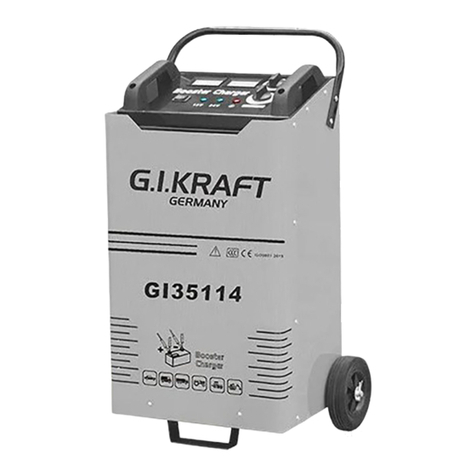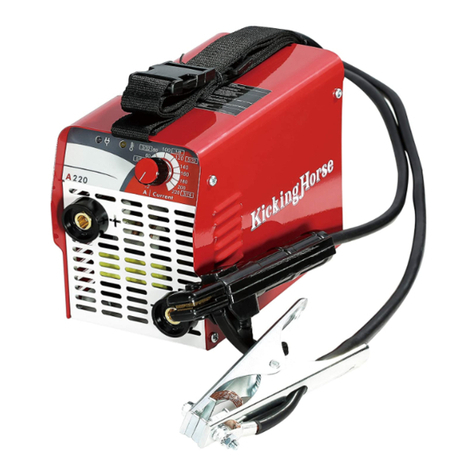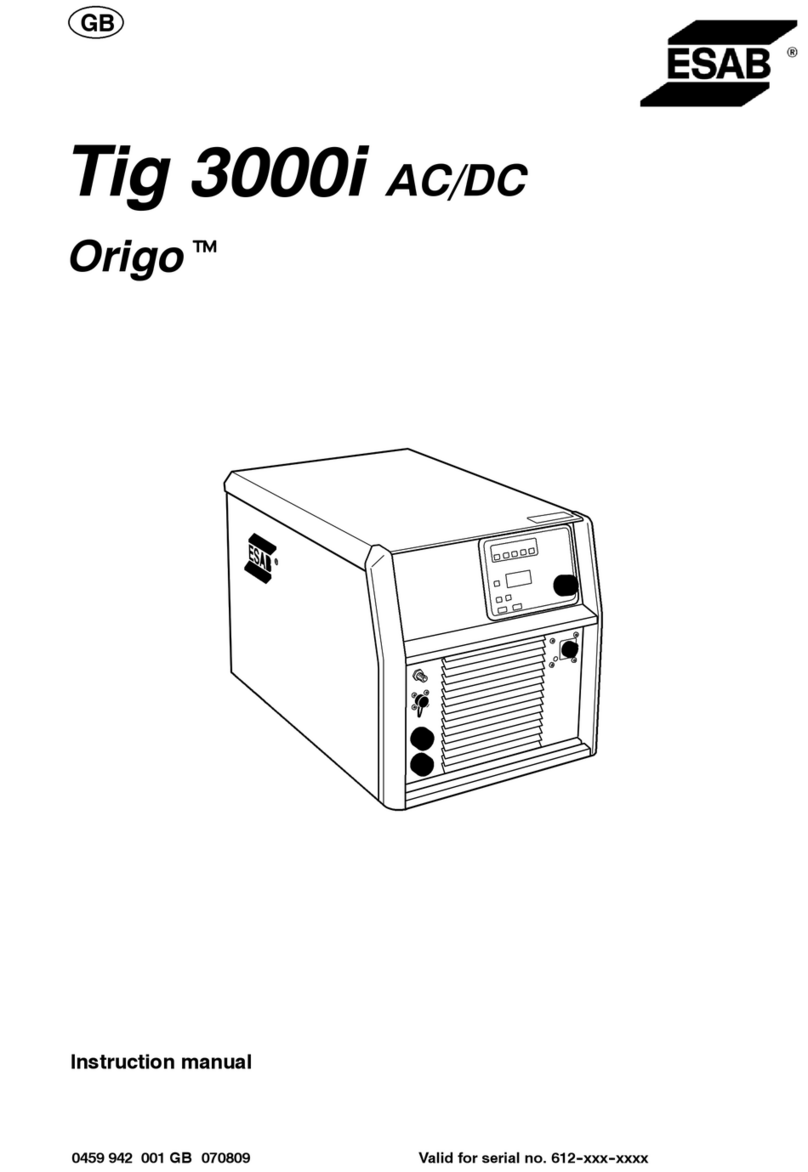
General Safety Instructions
1. Always wear proper clothing, safety glasses and gloves
when exothermic welding.
2. Only weld items that the mold is designed for.
3. Do not use worn or broken molds which could cause
leakage of molten weld metal.
4. Makesurethattheconductorsbeingweldedtsinthemold
properly and that the mold will close tightly around them.
5. Do not alter molds or accessories without factory
authorization.
6. Avoid breathing concentrations of smoke, as it may be
hazardous to your health.
7. Avoid contact with hot materials.
8. Removeorprotectrehazardsintheweldingarea.
9. Avoid moisture and contaminants in the mold and
conductors being welded. Contact of molten weld metal
with moisture or contaminants may cause weld metal to
spew out of mold.
10. When welding to pipe or vessels, you should consider the
following:
a. theeectweldingmayhaveonstructuralmembers
and thin wall pipe or vessels.
b. pipe or vessels that are pressurized or contain (or
havecontained)ammable,explosiveorhazardous
materials should be evaluated in the case of a melt-
through or hot molten weld metal coming in contact
withanyammable,explosiveorhazardous
materials.
11. Failure to abide by the above and follow welding
procedures may result in improper welds, damage to the
material being welded or create hazardous situations for the
individual.
Preparation of Cable
1. Cable must be bright, clean and dry.
2. Cable that is saturated with oil or grease must be cleaned.
Cablemaybecleanedbyburningitowithapropaneor
oxy-acetylenetorch.Afterburningooilorgrease,awire
brush should be used to remove residue. Wet cable must be
dried out. Use a hand propane torch.
3. Corroded cable must be cleaned. Use the CCBRSH2
cable cleaning brush or CCBRSH1 card cloth brush. It is
important that the ends of the individual strands are clean.
This can best be accomplished by making a fresh cut on the
end of the cable.
4. Cable should be straightened before clamping mold in
place. Bent or out of round cable will hold mold open and
cause leaks.
5. Remove insulation from insulated cable before cutting with
hack saw. Otherwise ends of strands will become coated
with insulating material which may cause defective welds.
6. FLEXIBLE CABLE: A sleeve must be used when welding
exiblecable.WRPSLVwrapsleevesarerecommendedfor
300 MCM and smaller cable.
Welding Procedure
1. Check mold tag for conductors to be welded and proper
weld metal cartridge size to use.
2. Make sure all surfaces and conductors are clean, dry and
are the proper sizes for the mold’s application per mold tag.
3. Molds can be dried by heating to approximately 250°F.
Molds may be dried with a hand operated propane torch or
byringachargeinthemoldbeforemakingthedesired
weld.
4. Positionmoldontoconductor(s).Seefrontofthissheet
for positioning of conductors into mold. Lock mold with
handle clamps or frame, which ever is the case.
5. Insert steel disk being sure it is directly centered over
the tap hole. Failure to insert disk into mold will create
improper welds and spewing of weld metal.
6. Pourcartridgeorcartridgesintothecruciblebeingcarefulnotto
upset the steel disk. Tap bottom of cartridge to loosen all starting
powder and spread 2/3 of the powder evenly over the top of the
welding powder. Close the lid of the mold and pour the remaining
starting powder into the ignition pocket on top of mold lid.
7. Before igniting, verify conductor positioning and that mold
is closed completely.
8. Closecoverandignitestartingpowderwithintgun.
Pullintgunawayquicklytopreventfoulingint.When
necessary to hold down on mold cover use a long tool to
keephandawayfromashofignitingpowder.
9. Wait approximately 30 seconds before opening mold to
permit metal to solidify.
10. To clean the mold, use a MCBRSH1 natural bristle brush,
soft cloth or newspaper before making next weld. On
horizontally split molds, use end of mold cleaning spade, a
small diameter rod or screw driver to remove slag from tap
hole. Caution should be used when cleaning molds to avoid
burns from contact with hot mold.
DO NOT USE WIRE BRUSH TO CLEAN MOLD!
NOTE:1. Afouledintgunmaybecleanedbysoakingin
household ammonia.
2.Properweldmetalcartridgesizeismarkedonmold
tag and shown on the bottom of the cartridge tube.
3. Cartridge size is the approximate weight of the
powderingrams.Whenthecartridgesizespecied
is not available, two or more smaller cartridges or
part of a larger cartridge may be used. Care should
be taken not to mix starting material in-between
cartridges.
4. Handle Clamp adjustments may be made by
removing adjusting screw and turning eye
bolt 180° clockwise to loosen or 180° counter
clockwise to tighten.
Revised 3.8.18
